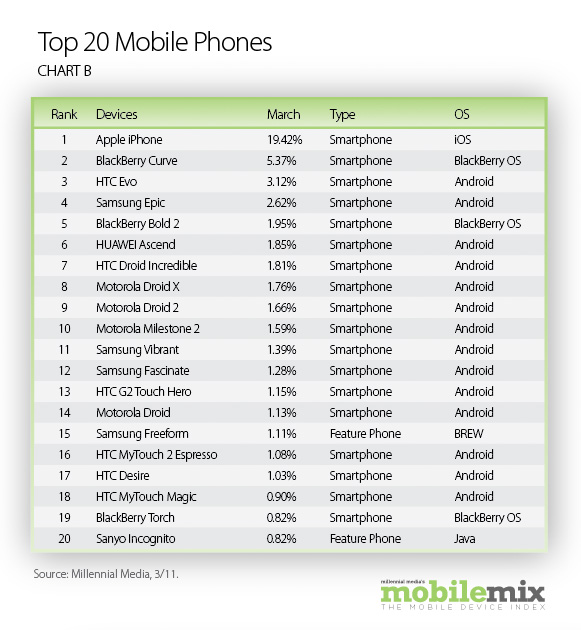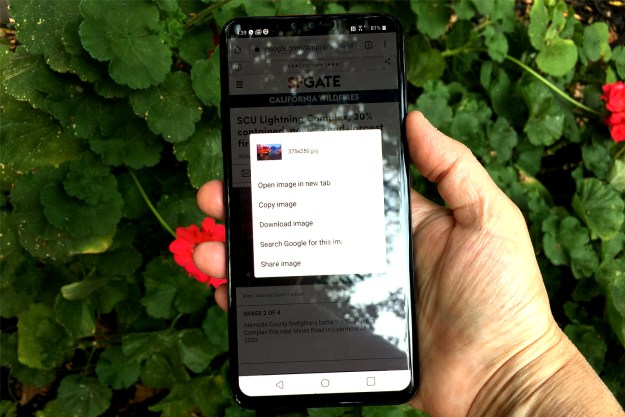
A jump in sales due to the launch of the iPhone 4 on Verizon Wireless has helped Apple’s iOS operating system make gains in mobile ad share against Google’s market-leading Android OS, according to the March report on mobile platform trends by Millennial Media.
Apple saw an 11 percent month-over-month growth in mobile ad share in March from sales of the Verizon iPhone. That helped boost Apple to 31 percent of the smartphone mobile ad market. The Android OS led the smartphone market for the fourth month in a row, with 48 percent mobile ad share. Apple’s ad impressions also saw a 29 percent jump, compared to Android’s 23 percent growth.
Research In Motion also enjoyed a growth surge, having earned a 29 percent month-to-moth growth, boosting its ad impression share to 18 percent.

While Apple’s iPhone ranks as the single most popular device, with 19.42 percent market share, seven of the top 10 smartphones in March run Android. BlackBerry also made it into the top 10, with the BlackBerry Curve ranking in at No. 2 and the BlackBerry Bold 2 at No. 5. Out of the top 20 smartphones, those running Android devices accounted for 14.

Apple maintained its lead as the No. 1 device manufacturer, with 32 percent of all mobile ad impressions on Millennial Media’s network. The Verizon iPhone helped in this area as well, having accounted for 8.2 percent of all iPhone impressions.
Android may have displayed more ads, but Apple made those advertisers more money, the Millennial study shows. When ranked by revenue, Apple pulled in 47 percent, compared to Android’s 36 percent. RIM took the third largest chunk with 7 percent revenue share. All other platforms accounted for 10 percent.
Millennial also looked at the growth of other “connected” mobile devices, including tablets. According to the report, this group saw 21 percent month-to-month growth overall. Tablets captured 17 percent of the total device impression share.
Worldwide, Android ranks as the No. 1 mobile platform, with about 30 percent market share, compared to iOS’s slightly declined market share of 24 percent.
Editors' Recommendations
- An Apple insider just revealed how iOS 18’s AI features will work
- Here’s how Apple could change your iPhone forever
- The 10 best photo editing apps for Android and iOS in 2024
- When will Apple release iOS 18? Here’s what we know
- We now know when Apple is adding RCS to the iPhone


